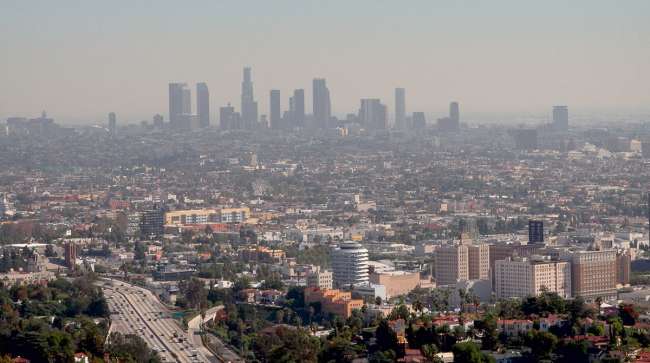Senior Reporter
FHWA Announces Plan for States, Localities to Track GHG Emissions

[Stay on top of transportation news: Get TTNews in your inbox.]
The Federal Highway Administration has announced a notice of proposed rulemaking for states and municipalities to track and reduce greenhouse gas emissions.
The plan, announced July 7, makes available more than $27 billion in federal funding over five years to help state departments of transportation and metropolitan planning organizations meet their declining greenhouse gas emissions targets.
“The Reduction of Truck Emissions at Port Facilities Program will provide $400 million in competitive funding to reduce truck idling and emissions at ports, including through the advancement of port electrification,” FHWA said.
FHWA announced a Notice of Proposed Rulemaking for states and municipalities to track and reduce greenhouse gas emissions made available with over $27B through #BipartisanInfrastructureLaw. The rule would take important steps to combat climate change. https://t.co/gg6JO8boME pic.twitter.com/FESzeTEbf5 — Federal Highway Admn (@USDOTFHWA) July 7, 2022
The new proposal calls for states and municipalities to establish a national framework for tracking state-by-state progress by adding a new greenhouse gas-emission performance-management measure to the existing FHWA national performance measures. It would create a flexible system under which state DOTs and metropolitan planning organizations would set their own declining targets for on-road greenhouse gas emissions from roadway travel on the national highway system.
The notice indicates the requirements are intended to advance President Joe Biden’s commitment to combat climate change and bring down costs for families, FHWA said.

Buttigieg
“With today’s announcement, we are taking an important step forward in tackling transportation’s share of the climate challenge, and we don’t have a moment to waste,” U.S. Transportation Secretary Pete Buttigieg said in a statement. “Our approach gives states the flexibility they need to set their own emission-reduction targets while providing them with resources from President Biden’s bipartisan infrastructure law to meet those targets and protect their communities.”
The proposed rule would not mandate the level of the targets.
Rather, state DOTs and metropolitan planning organizations would have flexibility to set targets that are appropriate for their communities and that work for their respective climate change and other policy priorities, as long as the targets would reduce emissions over time.

3PL problem-solvers discuss the supply chain and how they use technology to improve their customer competitiveness. Tune in above or by going to RoadSigns.TTNews.com.
FHWA said that by establishing the proposed GHG measure, it would be taking action to address the largest source of U.S. CO2 emissions. In 2019, the transportation sector accounted for 34.6% percent of total U.S. CO2 emissions, with 83.2% of the sector’s total CO2 emissions coming from on-road sources.
The transportation sector is expected to remain the largest source of U.S. CO2 emissions through 2050, increasing at an average annual rate of 0.3% per year despite improvements in the energy efficiency of light-duty vehicles, trucks, and aircraft.
Factors such as population growth, expansion of urban centers, a growing economy and increased international trade are expected to result in growing passenger and freight movement.
FHWA said the proposed rule is expected to be published in the Federal Register in the next several days.
Want more news? Listen to today's daily briefing below or go here for more info:




